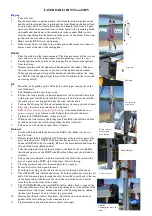
CDMA2000 Signaling
R&S
®
CMW-KG8xx/-KM8xx/-KS8xx
466
User Manual 1173.9511.02 ─ 11
4.2.1 Test Setups
The following sections provide an overview of typical test setups for the individual sce-
narios.
4.2.1.1
Test Setup for Standard Cell Scenario
The device under test (DUT) can be connected to one of the bidirectional RF connec-
tors RF 1 COM or RF 2 COM at the front panel of the R&S
CMW. No additional cabling
and no external trigger is needed. The input level ranges of all RF COM connectors are
identical.
The bidirectional RF connection between the tester and the DUT carries both the for-
ward and the reverse signal:
●
The R&S
CMW transmits the forward (base station) signal to which the DUT can
synchronize in order to perform registration and establish the connection. The for-
ward signal is used to transfer signaling messages and user data to the DUT.
●
The DUT transmits a reverse signal that the R&S
CMW can receive and decode in
order to set up a connection and perform various measurements.
See also: "RF Connectors" in the R&S
CMW user manual, chapter "Getting Started"
4.2.1.2
Test Setup for Hybrid Mode Scenario
A test setup for a connection with CDMA2000 1xRTT and CDMA2000 1xEV-DO
involves two forward and two reverse signals. The two signals must be transmitted via
different RF converters.
The R&S
CMW offers two ways to achieve the hybrid mode:
●
Single SUU or two SUUs in one R&S
CMW
: you use two connectors at the
R&S
CMW and one connector at the DUT.
For the HW specification installed at at the R&S
CMW see
Use a bidirectional RF connector for the first forward and reverse signal and a sep-
arate RF connector for the second forward and reverse link. Connect both RF con-
nectors to an external combiner and connect the combiner to the DUT.
The following figure illustrates this example.
General Description
深圳德标仪器
135-1095-0799
















































